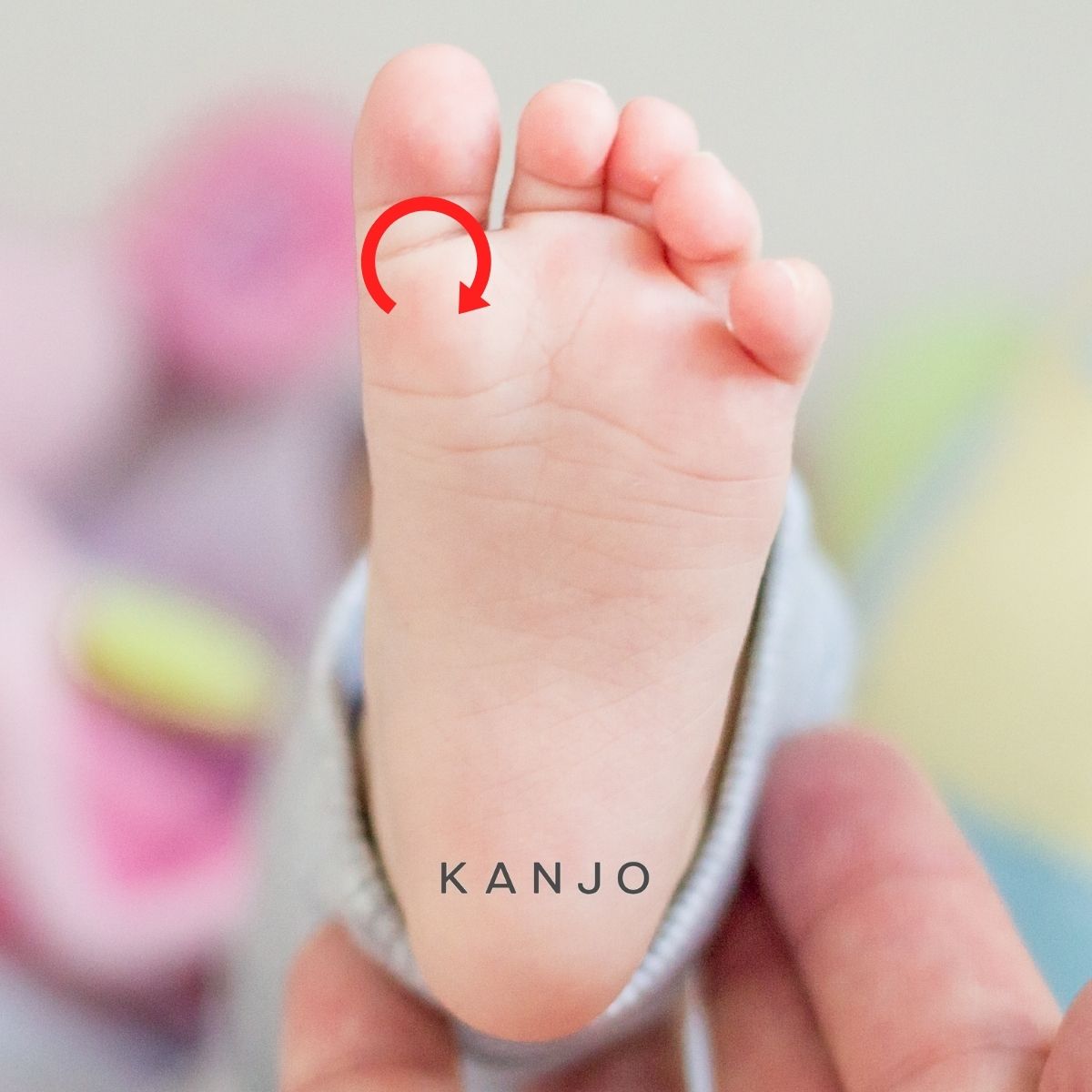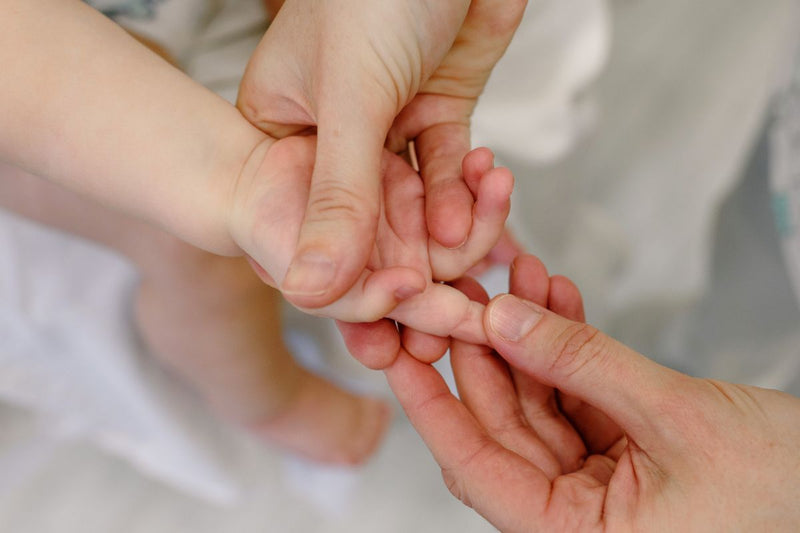As parents, we want the very best for our babies and are always looking for ways to keep them healthy, especially using natural methods. One way that many parents may not know about is acupressure.
Acupressure is a safe and effective form of Traditional Chinese Medicine that involves applying pressure to baby pressure points on the body in order to stimulate healing energy. It can be used to help relieve pain, reduce stress levels, improve digestion and circulation, and even boost the immune system.
In this article, we will explore some of the baby pressure points that parents should be aware of. We will look at how these points can be used to help with fussy babies and more.
In this guide, we’ll give you a run down on all the main pressure points you should know and tips to help you along the way. Let’s get into it and help your little ones feel their best!
How Can Acupressure Help Babies?

If you have a baby, you know you’re already holding them pretty much all of the time!
So, it’s pretty easy to integrate acupressure into your daily life in a way that’s not disruptive for you or your child. Plus, it takes very little time and is completely natural.
Acupressure is an ancient massage form that works to encourage the movement of energies (“qi”) throughout the body. It targets the same areas and channels as acupuncture but is carried out with light pressure from the fingertips rather than needles.
Acupressure can help your baby's digestion, with pressure points to help move gas, form burps, and encourage bowel movements.
Gentle stimulation of these acupoints can help ease your child's discomfort, and get energy and blood flowing smoothly again.
Baby foot reflexology can help prepare your baby for bed. Getting natural energies flowing and easing discomfort leads to calmer, sleepier babies.
- Learn more about Baby Pressure Points for Sleep
This includes teething babies as well, as there are techniques you can try to ease gum pain.
Main Acupressure Points to Help Your Baby
1. Governor Vessel 12 (GV 12 or DU 12) - Shenzhu or Body Pillar

The Governor Vessel 12 pressure point is located in the center of the upper back. It’s below the third thoracic vertebrae, the seventh vertebrae down from the base of the neck.
This pressure point is calming, and gentle stimulation can help calm your child before bed or soothe them on the go.
2. Liver 3 (LV 3) - Taichong or Great Surge

LV 3 is located on the top of the foot, in the webbing between the big toe and the second toe of a baby's foot.
This point is often stimulated to help with leg issues, such as cramping or growing pains.
However, it is one of the more powerful points on the body, and can also be used to treat sleep and digestive problems.
3. Large Intestine 4 (LI 4) - Hegu or Union Valley

The powerful LI 4 pressure point can be found in the fleshy area between the thumb and pointer finger on the baby's hand. You can stimulate it as normal, or gently squeeze it from either side of the hand.
This point can help with colicky babies and is commonly used in both children and adults to relieve headaches. It may also help with teething pain.
4. Bladder 2 (B 2 or UB 2) - Cuanzhu or Bamboo Gathering

The B 2 pressure point is found on the lower part of the inner eyebrows, on the outer area of the eye socket.
Stimulation of UB 2 can relieve hiccups, as well as help clear sinuses and move mucus down and out through the nose.
Be extra careful due to this point's proximity to the eyes, and the fragile thin skin of the eyelids.
5. Pericardium 6 (PC 6 or P 6) - Neiguan or Inner Frontier Gate

Pericardium 6 is just a bit up from the wrist, between the two tendons of the forearm.
Stimulation of this pressure point can help with nausea and vomiting, as well as just a sore tummy.
As well as helping holistically, stimulation of this point provides a distraction and point of physical contact to focus on. This is effective at relieving nausea on its own.
6. Stomach 36 (ST 36) - Zusanli or Three Mile Point

Stomach 36 is another great point for helping with tummy trouble. It can be found about an inch below the kneecap, on the shin.
Stimulating this point aids with general digestion, stomach pain, and helps to produce healthy, regular bowel movements.
7. Solar Plexus Point

The Solar Plexus pressure point is located just below the ball of the foot, in the center. Gentle stimulation of this point is very calming for the baby and can help aid the transition into sleep.
8. Pituitary Gland

A good point to stimulate during bedtime is the pituitary gland point. It helps to put the baby at ease and
Gently stimulate the pad of the big toe, using a circular motion. Make sure to repeat the process on both feet.
9. Points for the Spine

A final step in the sleep foot massage routine comes from stimulating the spinal reflex points. These are located along the outer edge of the foot.
Applying acupressure to this point leads to muscular relaxation and better rest.
10. Points for the Brain and the Head

Gently stimulate the pressure points on the baby's head by moving from the outer eyebrows to the temples. Use both hands at the same time to provide bilateral stimulation if possible.
This area aids in emotional calming, sleep, and headache.
11. TMJ

Pressure points for the TMJ (jaw muscle) can be found on either side of the baby's big toe.
Stimulation of this point can lead to the relaxation of muscles after crying, as relief of teething pain.
You can also stimulate the TMJ directly by applying gentle pressure to the back of the jaw below the ear.
How to Apply Acupressure to Babies?
When applying acupressure to babies, gentleness is key. Less is more! Use gentle pressure on the pressure points for no more than 30 seconds, in a small circular motion.
You can use acupressure up to three times a day, though it’s best not to exceed 15 minutes in total.
You want your baby to be relaxed and calm, so take care to read their body cues and make sure they are happy and not over-stimulated.
Is It Safe to Use Acupressure Techniques on Babies?

Short answer: yes!
Acupressure is a gentle, natural technique that's perfectly safe and beneficial for babies. As long as you follow the recommended times, keep the pressure light, and don’t go overboard, your baby will enjoy it.
When Should You Avoid Using Acupressure on a Baby?
Acupressure should be used as an additional therapy for day-to-day ailments, not as a substitute for health care.
If you have concerns about your baby's overall health or if issues such as poor digestion or distress happen more often than normal, always seek professional medical help.
Acupressure should also not be used on any areas that are sensitive, including on injuries or rashes.
Sources:
